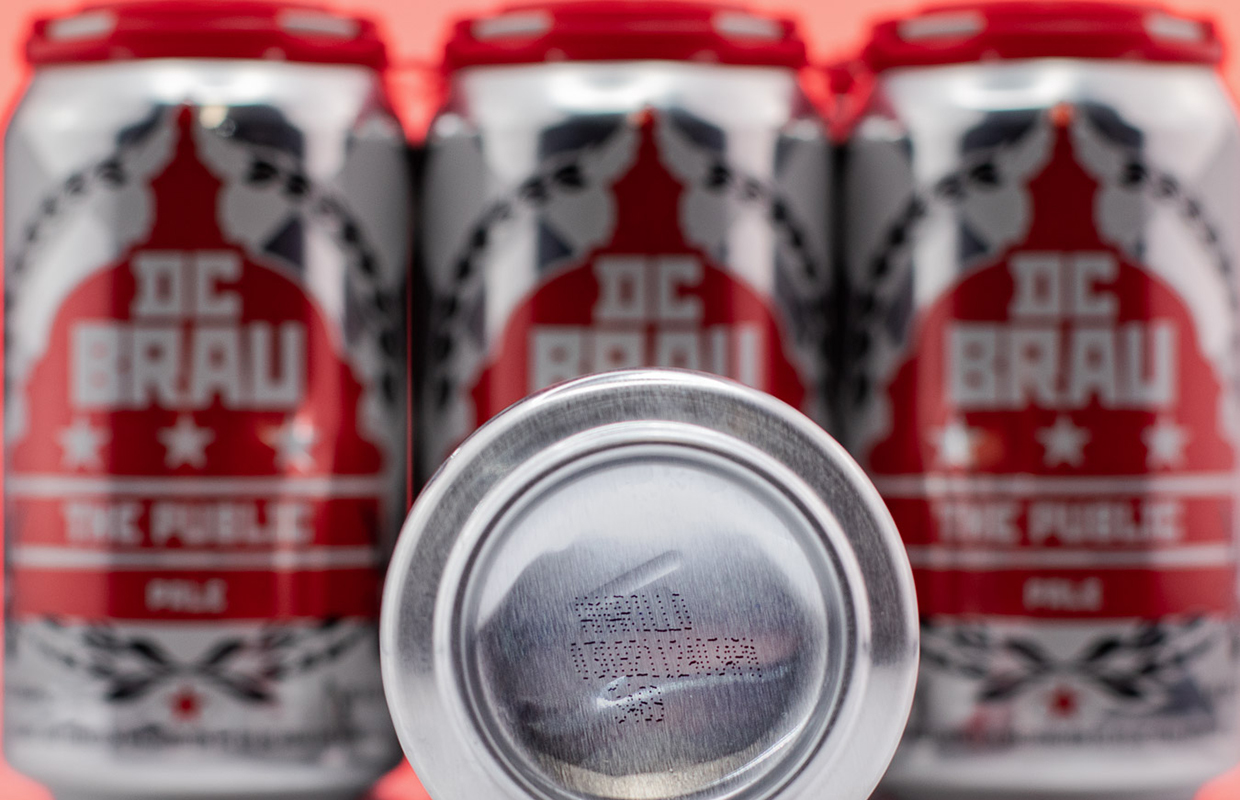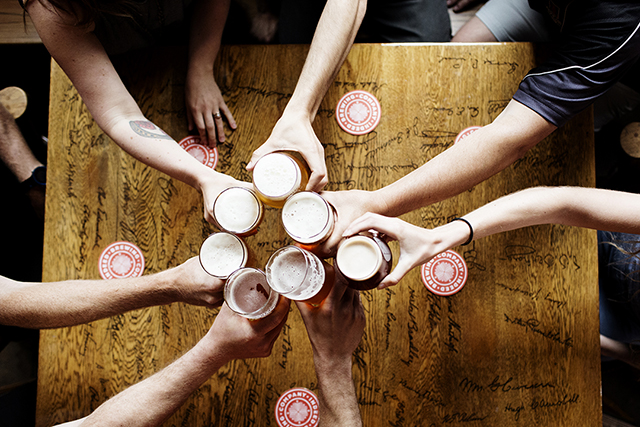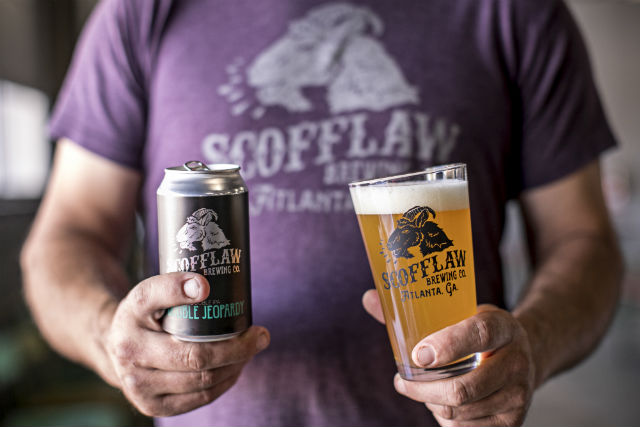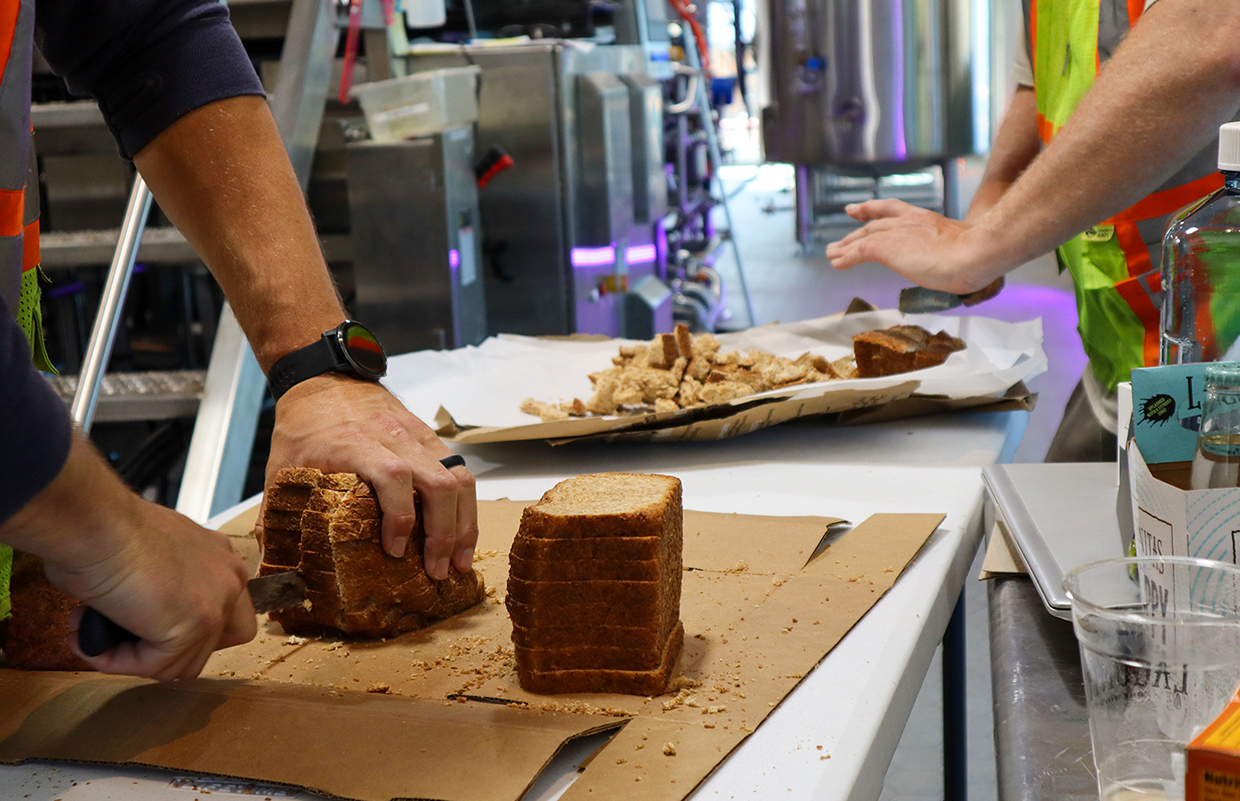
From pouring its first keg of The Public Pale Ale at the old Meridian Pint location now more than 10 years ago to announcing a celebration of its flagship brand in 2021, DC Brau isn’t afraid to mix it up.
Co-owners Jeff Hancock and Brandon Skall shared with Brewer recently the key points that helped shape the company — which was the first Washington, DC-based brewery to open in the modern craft beer era.
“The way that the beer culture is going now, there’s not a whole lot of creative stones that haven’t been unturned yet,” said Hancock, who is the company’s Brewmaster and president. “We can continue to try and have competitive markets in those various sectors. And we’ll continue to do so as we move forward.”
The brewery was forward-thinking in many ways, having to carve a legal path in the area to start, and jumped into canning immediately during what was still a bottle-heavy market.
Here are four ideas that have helped shape the brewery since its inception.
Cans
“One of my favorite memories was being on Jeff’s back porch when we were planning the brewery,” said Skall, who is the brewery’s CEO. “We were cracking [Oskar Blues’] Dales and as we were conceptualizing what the brewery would be like we both just looked at each other and said, ‘Oh, and we’re definitely going to be a canned brewery. Right?’
“That was a given and I think that was one of those moments that sort of solidified that we were like-minded individuals out for the same goal.”
That meant ordering a truckload of printed cans early on and packing the 7,000 square foot facility with pallets. When the brewery first opened, being a packaged and distributed brewery was the plan.
“The original business plan, thankfully, due to the support of the local craft beer enthusiasts … it didn’t necessarily get thrown out the window, but it definitely got put on a shelf, because we were just so focused on meeting demand within those first five years,” Hancock said. In fact, the plan to package got pushed aside for a while as draft sales were doing so well.
“We also switched distributors, because we just had to be with one that was very much more organized and was going to do best by our brand,” he said. “When we did that switch that helped. We’ve done visioning over the years and I would say the overall ethos hasn’t changed.
“We’re always about experimentation, and not necessarily limited to experimenting with beers, but that could be like, ‘Hey, we’re gonna try to package kegs or cans differently, maybe we can cut a couple steps out.’ “
Legislation
Not that DC was not a friendly area to breweries, but Skall pointed out that a brewery had not been open in the area since the 1950s, so some legislative work needed to be done to help set up breweries for the future.
“We had to do a lot of sort of trailblazing there to make it a more friendly environment,” he said. “As a result of that, there really was a great sort of beer culture that emerged in Washington, DC. We did those initial changes, but now since we’re all together, we have a DC Brewers Guild, and we’re really able to make an impact and continue to modernize these laws and distribution rights and all these sorts of things that you need to have a really productive, great beer community.
“If it wasn’t us, it would have been somebody else, but I think we’re really proud that we had a piece of that.”
Community
Hancock said even after 10 years, resting on any laurels is not what DC Brau does.
“I think we are still expanding our base, probably not as fast as we would like,” he said. “That just forced us to sharpen the pencil, make sure that we’re standing out and that we’re not getting swept under the rug.”
Skall said if you’re not building a consumer base actively, you’re losing a consumer base.
“That’s the truth,” he said. “There’s always more people coming in to drink. People turn 21 every year and people get into beer culture every year. So if we’re not trying to engage them and welcome them in, then what are we doing?
“Being in DC, this is a city that changes very rapidly because of politics. Every couple of years, there’s a lot of people leaving, and a lot of people coming. So we’re a new brand for a lot of people on a pretty regular basis. That consumer outreach is really important to us. If you’re not building new customers, you’re losing old ones, it just happens. So I think every company’s got to keep that in mind.”
And engaging a consumer or community base might not even be beer-focused, Hancock pointed out.
“Just kind of letting them know that we’re here and doing our best to pump some money into the local economy. Create some jobs, have a good place for people to come to hang out regardless of drinking or not,” he said. “Definitely still more work to be done there.”
Innovation
Launching a hard seltzer in November of 2019 helped the brewery sustain through the pandemic. Of course, when they launched it, DC Brau didn’t expect it to become 20% of its 2020 sales either.
“That was a risk,” Skall admitted “But it helped us get through last year. It’s predominantly a retail/to-go sales category. So it really did work well for us during the pandemic. So that’s one of those little things that was a bit of luck, that actually ended up helping us out a lot.
Skall added that a lot of the beers DC Brau makes came from a place of passion, a feeling, or a moment.
“Then some of the beers we made we’re really part of an overall plan,” he said.
One such planned idea is releasing new versions of its inaugural Pale Ale, The Public, this year with new dry-hopping versions each month for the next 10 months.
“Sometimes you have to change things up to truly appreciate where you started,” Hancock said in a release. “We’ve been brewing our Pale Ale exclusively with Centennial hops for 10 years, and thought it would be fun to play with the dry-hop aroma profile in the recipe given consumer trends towards more aroma-forward pale ales and IPAs over the last decade.”
Special recipe packs will be identified with special red pack tops that boast a QR code that leads customers to a landing page on the brewery’s website featuring more information about that month’s featured hop, tasting notes, and more. The first brew of the special Public 10 Year series features Amarillo hops.




Be the first to comment